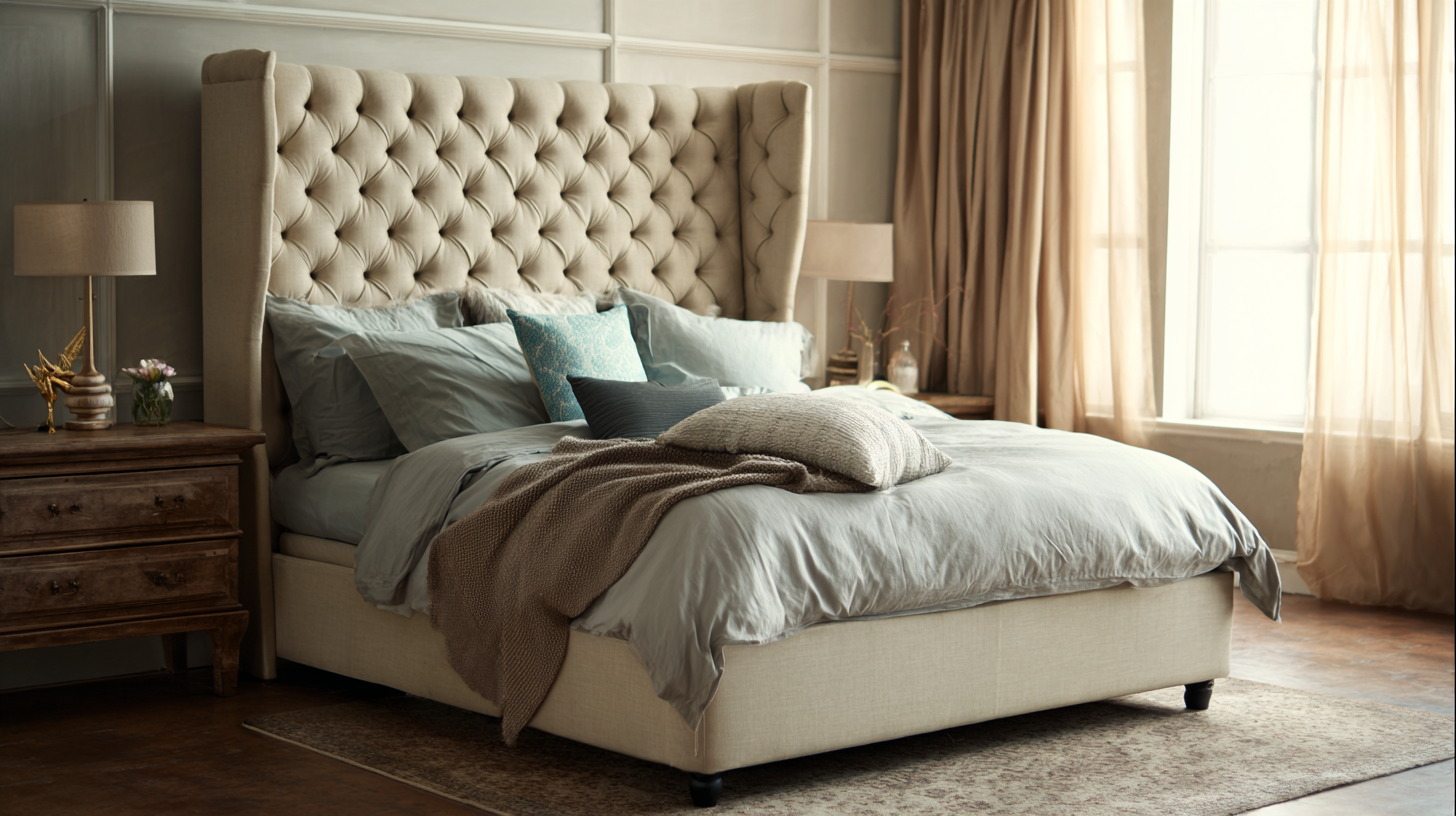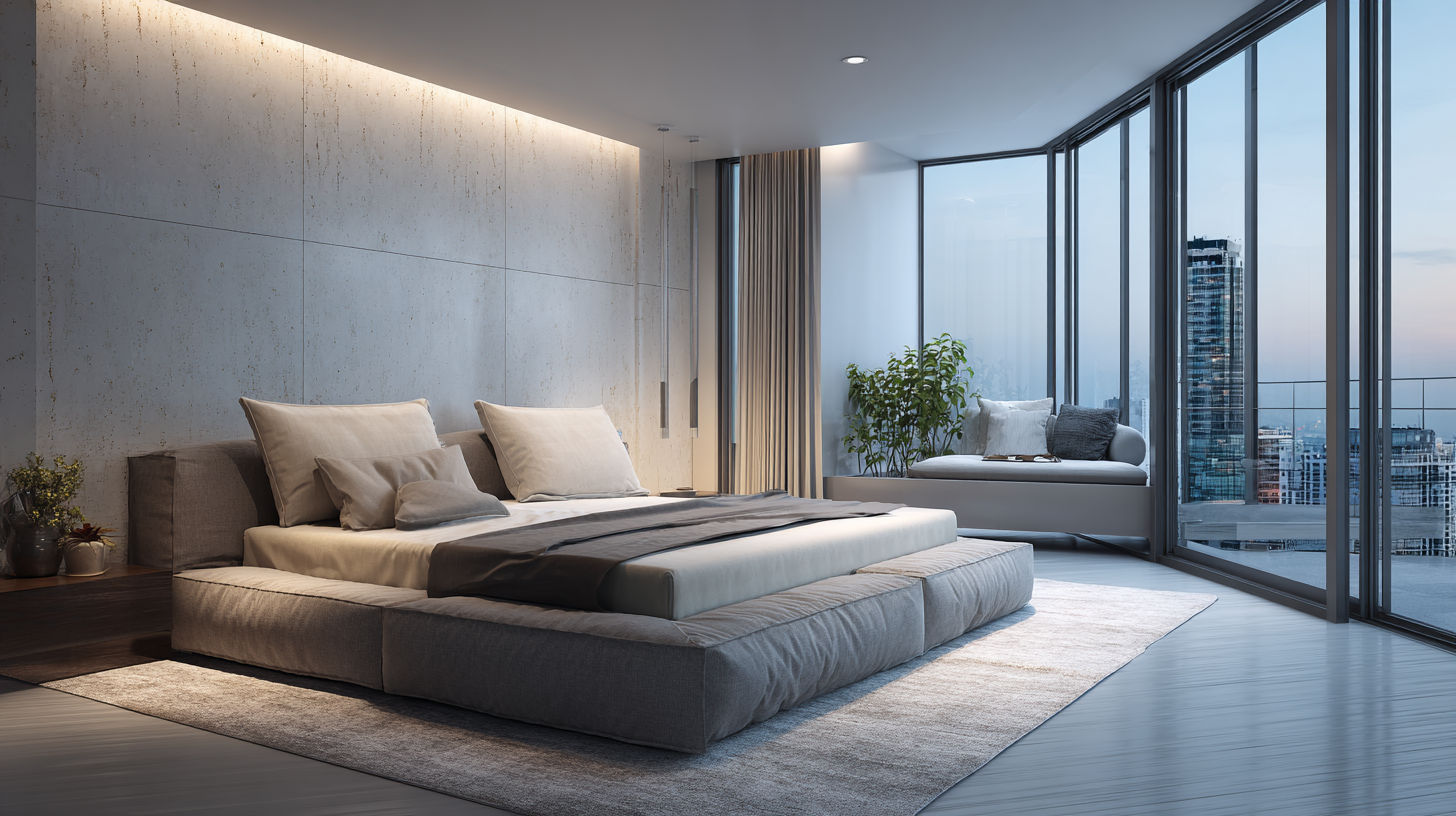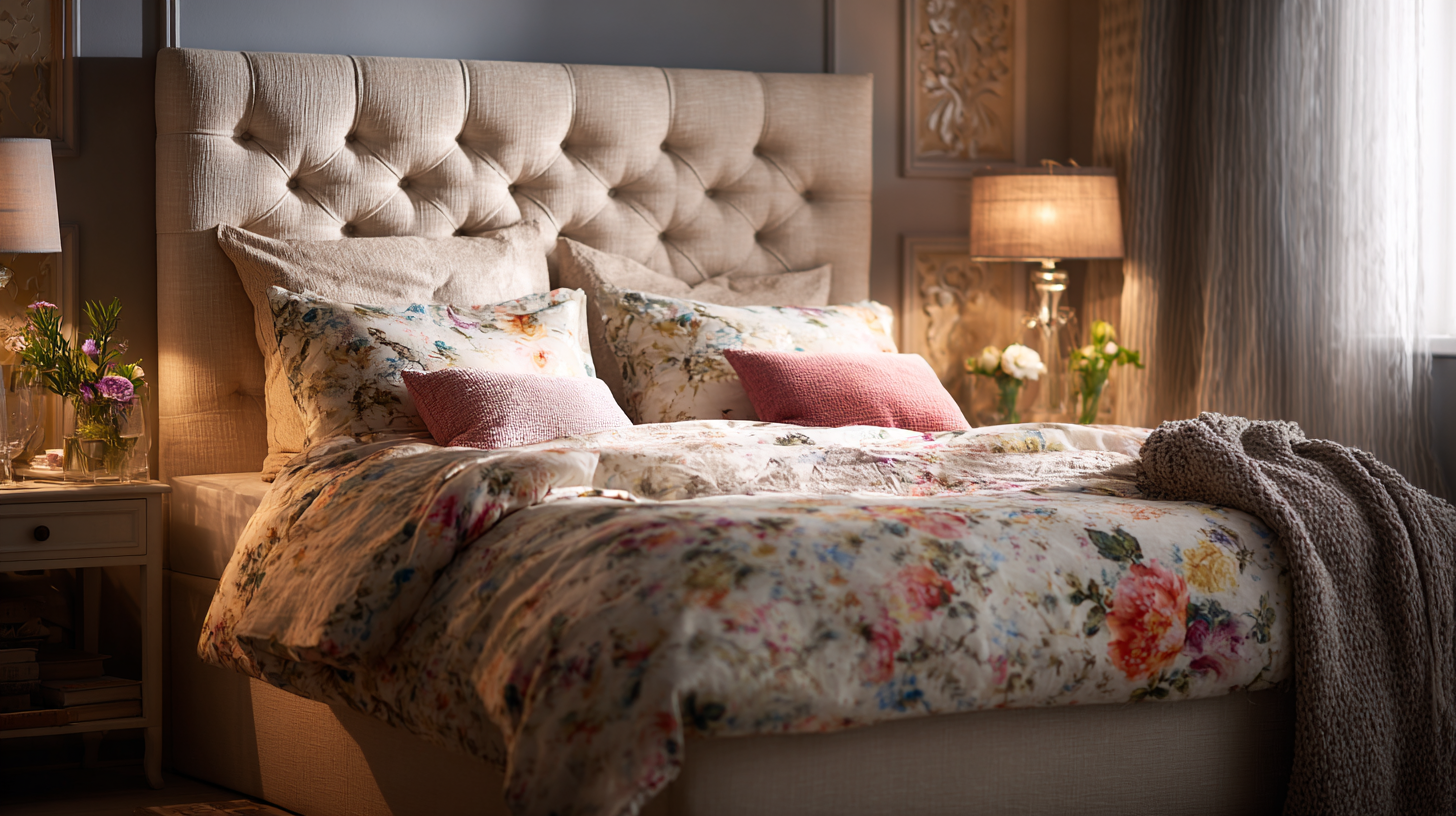5 Reasons Why the Best Upholstered Bed Can Transform Your Sleep Quality
The importance of a good night's sleep cannot be overstated, as numerous studies indicate that sleep quality directly impacts both physical and mental health. According to the National Sleep Foundation, over 60% of adults report sleep problems, which can be significantly influenced by the sleeping environment. A key factor in this setting is the choice of bed, with upholstered beds increasingly gaining recognition for their transformative effects on sleep quality.
 Upholstered beds provide not only aesthetic appeal but also enhanced comfort and support, aligning with findings from the Sleep Research Society that highlight the correlation between sleep surface quality and overall sleep satisfaction.
With the right upholstered bed, individuals can not only improve their sleep but also address common sleep-related issues, making it a worthy investment for those seeking better rest and rejuvenation.
Upholstered beds provide not only aesthetic appeal but also enhanced comfort and support, aligning with findings from the Sleep Research Society that highlight the correlation between sleep surface quality and overall sleep satisfaction.
With the right upholstered bed, individuals can not only improve their sleep but also address common sleep-related issues, making it a worthy investment for those seeking better rest and rejuvenation.
The Importance of Quality Sleep: Statistics on Sleep Deprivation and Its Effects
Quality sleep is essential for overall health, yet statistics show that sleep deprivation is a widespread issue. According to the World Health Organization, 27% of the global population suffers from sleep disorders, with insomnia notably affecting many in China. Young adults, particularly those in digital industries, face significant sleep challenges. A recent report indicated that these workers often struggle with sleep quality, highlighting the urgency for effective solutions.
Transforming your sleep environment can lead to remarkable improvements. Choosing the best upholstered bed can enhance your comfort and support, promoting deeper and more restorative sleep. It's recommended to aim for at least 7 hours of sleep per night and to establish a bedtime around 10 to 11 PM for optimal health benefits.
Tips for improving sleep quality include creating a calming bedtime routine and minimizing screen time before sleep. Additionally, investing in quality bedding and pillows tailored to your sleep style can significantly enhance your sleep experience, helping to alleviate stress and improve overall well-being.
Understanding the Influence of Upholstered Beds on Sleep Posture and Support
Upholstered beds are not just stylish additions to your bedroom; they play a crucial role in enhancing sleep posture and support. Recent studies indicate that proper support can significantly influence sleep quality, especially for individuals suffering from conditions like fibromyalgia and chronic back pain. An ideal upholstered bed offers a well-balanced combination of firmness and contouring, which is essential for maintaining spinal alignment. When your mattress is paired with a supportive frame that complements the elasticity of the upholstery, the result is a sleeping surface that reduces pressure points and alleviates discomfort.
Moreover, the importance of personalized sleeping environments cannot be overstated. Research shows that bedroom temperatures and bedding choices significantly impact sleep quality. An upholstered bed allows for various bedding options, which can be tailored to maintain optimal temperature and texture, further contributing to a restful night. Studies suggest that individuals who invest in high-quality bedding along with their upholstered bed report marked improvements in sleep duration and satisfaction. With the right setup, an upholstered bed can transform not just how you sleep, but how you feel throughout the day.
Material Matters: Analyzing Fabric Choices and Their Impact on Sleep Quality
When it comes to choosing an upholstered bed, the impact of fabric choices on sleep quality cannot be underestimated. Different materials can create varying atmospheres in your bedroom, influencing not just aesthetics but also comfort and health. For instance, natural fibers like cotton and linen are breathable and hypoallergenic, promoting a cleaner sleep environment. These fabrics allow air to circulate, preventing overheating during the night, which is crucial for achieving deep, restorative sleep.
On the other hand, synthetic materials such as polyester may offer durability and easy maintenance, but they often trap heat and moisture. This can lead to discomfort, especially for those prone to night sweats. Additionally, consider the texture of the fabric; softer, plush finishes can enhance the tactile experience, making your bed a more inviting space. Ultimately, investing in high-quality upholstery with the right fabric can make a significant difference in your overall sleep quality, leading to more restful nights and revitalized mornings.
5 Reasons Why the Best Upholstered Bed Can Transform Your Sleep Quality
| Feature | Impact on Sleep Quality | Fabric Types | Durability | Maintenance |
|---|---|---|---|---|
| Comfort | Enhances relaxation and reduces sleep disturbances | Cotton, Linen | Moderate | Easy to clean |
| Temperature Regulation | Helps maintain a comfortable sleeping temperature | Wool, Bamboo | High | Requires special care |
| Aesthetic Appeal | Contributes to a calming environment conducive to sleep | Velvet, Polyester | Moderate to Low | Simple to maintain |
| Support | Promotes proper spinal alignment to reduce pain | Memory Foam, Hybrid | High | Regular rotation |
| Noise Reduction | Minimizes disturbances from movement during the night | Microfiber, Denim | Moderate | Machine washable options available |
The Role of Aesthetic Design in Creating a Relaxing Sleep Environment
Creating a relaxing sleep environment is essential for improving sleep quality, and the aesthetic design of your bedroom plays a pivotal role in this transformation. A well-designed space can significantly reduce stress and anxiety, promoting a sense of calm that encourages restful sleep. According to a study by the Sleep Foundation, individuals who curate their bedroom environment with soothing colors and uncluttered layouts report 20% better sleep quality. Soft color palettes, especially tranquil blues and calming greens, are not only visually appealing but also help lower heart rates and foster a peaceful atmosphere, confirming the psychological impact of color on our sleep experience.

Incorporating a beautifully upholstered bed can elevate the aesthetic of your bedroom while providing ultimate comfort. Innovative designs often feature luxurious fabrics that not only enhance visual appeal but also support better posture and relaxation during sleep. Recent trends indicate that minimalist designs are preferred, with 59% of interior designers advocating for clutter-free spaces to reduce mental fatigue. By focusing on elements like the texture of the upholstery and the overall arrangement of bedroom furniture, homeowners can create an inviting sanctuary that encourages unwinding after a long day. Each of these considerations helps in crafting a sleep environment that is not only comfortable but also conducive to rejuvenating rest.
Exploring the Long-term Benefits of Investing in an Upholstered Bed for Well-being
Investing in an upholstered bed can significantly enhance your overall well-being, and the long-term benefits extend far beyond mere aesthetics. One of the primary advantages is the improved comfort these beds offer. Upholstered beds are typically designed with padding and fabric that provide a softer, more inviting surface to rest on. This increased comfort can lead to better sleep quality, as your body can relax and unwind more effectively, reducing tossing and turning during the night.

Moreover, the design of upholstered beds contributes to better sleep hygiene. The materials used often help in minimizing noise, making it easier to maintain a peaceful sleep environment. Additionally, many upholstered beds feature adjustable bases that can cater to individual preferences, ensuring that every aspect of your sleep experience is tailored to your needs. This personalized approach not only nurtures restful sleep but can also lead to improved mood and energy levels during the day, further promoting a healthier lifestyle in the long run. Embracing an upholstered bed could very well be the key to unlocking better sleep quality and overall well-being.